Facing the 1.e4 move is never easy. Today our team’s recommendation is Sicilian Sveshnikov, which appears on the board after 1.e4 c5 2.Nf3 Nc6 3.d4 cxd4 4.Nxd4 Nf6 5.Nc3 e5
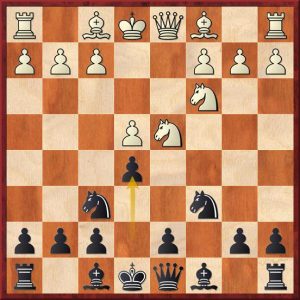
The Story of Sicilian Sveshnikov
This Sicilian variation was named after the Soviet/Latvian GM Evgeny Sveshnikov, who developed this line together with GM Gennadi Timoschenko (Gennadi himself wrote a book about this variation: “Sicilian Defense: The Chelyabinsk Variation, 2018”). It is also known as the Chelyabinsk Variation, which references the birthplace of the two GMs. Both developed the system in the mid-1970s, managing to revitalize and popularize this Sicilian variation.
Sicilian Sveshnikov’s idea
Playing 5…e5, Black wins time in development and opens the diagonal to the f8 Bishop, however permanently weakening the d5 and d6 squares. That was the main problem with this line: Players could not see any kind of compensation for these weaknesses until Sveshnikov himself managed to revitalize the line, as we will see below.
Among Sveshnikov’s top supporters are world champions Vladimir Kramnik and Magnus Carlsen.
The main pawn structure of Sveshnikov
Move 5…e5 defines the pawn structure of these variations, which is known as the Boleslavsky Wall. However, Sveshnikov has its particularities, which we will see in the theoretical part.
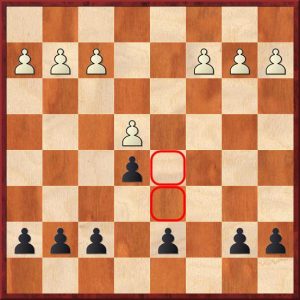
Overall, White’s plan is:
- Exploiting the d5 square (placing a piece on the weak square);
- Pressure the d6-pawn (For example, placing the heavy pieces on the d-file);
And overall, Black’s plan is:
- Make the break …d5 (Getting rid of the weaknesses created);
- Make the break …f5 (To create counterplay on the kingside);
- Fighting against White’s dominance for the square of d5.
Structure with 7.Nd5

With the pawn on d5, White has a colossal majority on the queenside and will try to advance that majority. Black, on the other hand, will try to go all out on the kingside.
Structure with gxf6
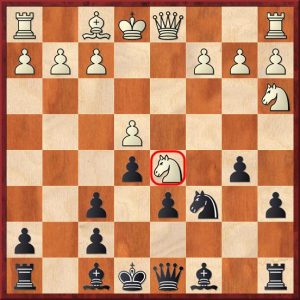
In this structure, White gives the pair of bishops and breaks the structure. Black needs to try to create a dynamic play, especially with the …f5 move, along with fighting for the d5 square.
Sicilian Sveshnikov’s Theory | Less played variations
Now that you have general ideas of what to do in the typical structure, it’s time to dig deeper. White’s main fired move is 6.Ndb5, but at the club level, White can try other moves:
- 6.Nxc6 It is not a dangerous move, since after 6…bxc6 Black no longer has the problem of the d5 square, and we can continue with …Bb4-…O-O and prepare the break …d5.
- 6.Nb3/6.Nf3 can be answered with 6…Bb4 pinning the knight and Black can continue with …d5 fast, for example: 7.Bd3 d5.
- 6.Nf5 has a similar idea to the main move, threatening Nd6+. The difference is that on f5 the knight is not safe, and after 6…d5 Breaking White’s unstable center. The following line is more or less forced: 7.exd5 Bxf5 8.dxc6 Qxd1+ 9.Nxd1 bxc6 With a quiet ending, where the active black pieces compensate for the inferior structure.
- 6.Nde2 Another calm move, which allows the f8-Bishop to develop out of the pawn chain. Either 6…Bc5 or 6…Bb4 is possible here.
Sicilian Sveshnikov’s Theory | Caruana’s Attempt

With 6.Ndb5, White creates the direct threat of playing Nd6+, which is a move that takes our bishop pair. Naturally, we’ll respond with 6…d6 avoiding the threat and questioning how White is going to continue. The main move here is 7.Bg5, but there is an alternative that Fabiano Caruana tried against Magnus Carlsen in the world championship match in 2018, which is the move 7.Nd5.
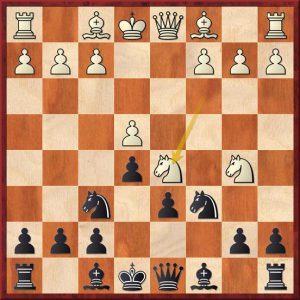
White threatens Nc7+, so we are forced to play with 7…Nxd5 8.exd5 and here I will recommend the move 8…Nb8, our idea will be to maneuver this knight with …Nd7 and possibly …Ne5. 9.c4 Beginning the advance on the queenside. 9…Be7 Preparing …0-0. 10.Be2 O-O And let’s try to prepare moves like …f5-…a6-…Nd7, and try to attack the kingside.
Sicilian Sveshnikov’s Theory | The revitalization of Sveshnikov
Continuing with 7.Bg5, it’s the idea that makes the most sense: White spikes the knight and takes full control of the d5 square. Let’s play with 7…a6, forcing the Knight back with 8.Na3, and there we have the Soviet GM’s idea: 8…b5!
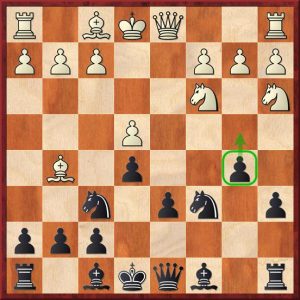
Before that, Black played more with 8…Be6, which allowed White to improve the knight with 9.Nc4. With the text move, Black threatens the fork with …b4 and most important of all: The Knight of a3 will take a long time to get back into the game, and this helped a lot in the resurrection of the variation. White has two main moves: 9.Bxf6 (the most aggressive line) and 9.Nd5 (the most positional line).
Sicilian Sveshnikov Theory | The aggressive 9.Bxf6

Against this move, we need to play the ugly 9…gxf6 on the other hand, we can manage to make the ideal break …f5 twice 10. Nd5 Avoiding the fork, and here move 10…f5 Attacking the center is essential for the black ones. 11.Bd3 Keeping the center relatively stable 11…Be6 Fighting for d5, and Black might get the idea to play with …Bxd5-…Ne7. 12.c3 To try to bring the Knight of a3 back into play. 12…Bg7 Finishing development, Black prepares …O-O and will try to play with moves like …Bxd5-…Ne7, with great counterplay.
Sicilian Sveshnikov Theory | The positional 9.Nd5
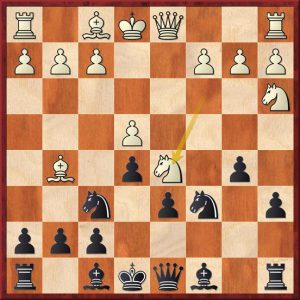
The main line, white does not break the structure and opts for a calmer game. We’re going to play with 9…Be7 Threatening…Nxd5 10.Bxf6 Keeping absolute control of d5, and something we’re going to have to deal with when we play this Sicilian. 10…Bxf6 Since Black won’t be able to play with …f5 fast, it’s not interesting to take a pawn here. 11.c3 With the typical idea of bringing the knight back into play via c2-e3. 11…Bg5 A typical idea: As White will try to play with Nc2-Ne3, to reinforce control over d5, Black immediately places the bishop by pressing e3, where an exchange when the knight reaches e3 is entirely possible. 12.Nc2 With the knight on c2, White also gets the idea of playing with a4, breaking Black’s structure. 12…Rb8 Anticipating the a4 move, where we will respond with …bxa4. A position with many imbalances, with chances for both sides.
Conclusion
The Sicilian Sveshnikov is perfect for those players looking for imbalances and positions with many attacking chances. I hope this article helps you get started with Sicilian Sveshnikov, and that she helps you win lots of games, and if you liked Sveshnikov, how about checking out another popular and aggressive Sicilian, the Najdorf?